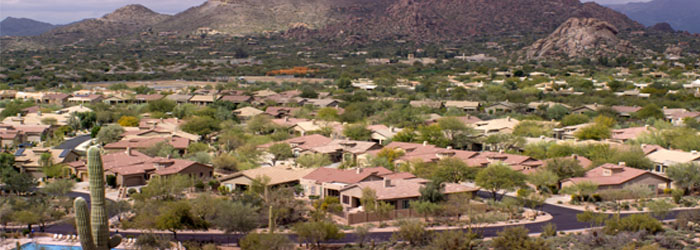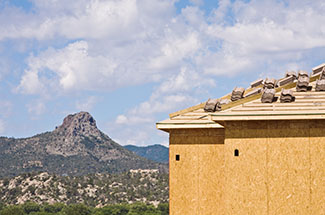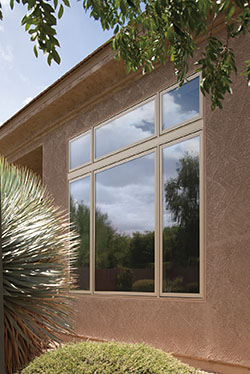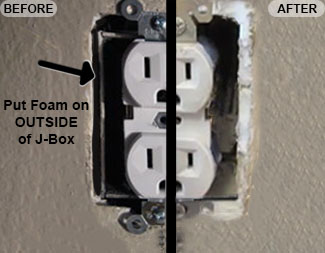Out-sulation
 05 June 2018
05 June 2018 

Should You Put Insulation on the Outside of Your House?
You can, but you probably don't need to do that.
Most Arizona homeowners know what insulation is and how it helps protect houses from getting too hot in summer -- or too cold in winter (not something we worry about very much).
But when summer arrives and the cost of air conditioning soars, you probably start wondering about improvements that can make your home feel cooler in July and August.
Could you cool off more and have lower power bills if there was more insulation inside your walls? Could more insulation – like thicker walls -- stop the heat? What about putting rigid foam boards on the exterior of your home and spreading stucco over that? You may have heard the term "out-sulation" and maybe you wonder if that's the answer.
In fact, in the typical stucco Arizona home built since 1980, builders started putting an extra layer of insulation into the walls of houses. The insulation ratings went up with the use of 1-inch high-density rigid foam sheets as well as better ways of installing these materials.
Building practices were improved significantly as well to prevent thermal bridges – areas where the heat can leak into houses. For example, insulation now covers the studs rather than being fastened to the sides of the studs. As a result, the insulation became a complete envelope protecting the inside of your house. In the past, those wooden 2-by-6 studs actually became something like radiators conducting the heat into your house.
So you probably have the perfect insulation -- and out-sulation -- if your typical stucco home was built since 1980.
The biggest problems for you now are your older windows and doors. These serve as big openings in your insulation envelope that let those high temperatures outside seep into your house.
Single-pane, aluminum-frame, clear-glass windows are the perfect path for hot air to flow into your home. So, if you're thinking about spending money on a major improvement, new windows and doors that stop the heat are your best solution. You want double-paned windows with gas injected between the panes as well as low-emissive coating on the glass.

In 95 percent of stucco homes built since the 1980s, we would suggest making one other improvement – something small that will cost significantly less than installing new windows or adding extra out-sulation and yet can have a big impact: insulating your outlets.
All you need to do is remove the face plate on every electrical outlet. Then foam or caulk around the junction box, sometimes called a J-box. We're talking about every plate, both inside and outside the house. There's also an opening next to the weep screed under the stucco at the base of your house that can be caulked as well. This is called the J-plate. But be careful not to plug the holes in the weep screed itself.
If you do all that caulking, it will save as much energy on power bills as you would save by closing one window left open in the middle of August – something you'd never do, of course, in Central or Southern Arizona.
###
Photo Credits:
RELATED CONTENT:
- Blog: Six Things You Need To Know About New Windows
- Blog: How Window Treatments Can Block The Summer Sun
- Blog: How Can I Cool Off My Garage This Summer?
- DIY Q&A: How close can I plant trees to my home?
- Podcast: Window Treatments
Print this page
recent post
- Duck, Duck, Duct! How Often Should Ductwork Be Cleaned?
- Vinyl vs. Fiberglass Windows: Which Is The Better Choice Of Replacement Window?
- We May Be The Grand Canyon State, But The Rocky Mountains Are Important For Arizona
- Welcome to Arizona! Things A Newbie to Arizona Should Know
- The Pros & Cons of Buying A Flipped House
- Getting In On The Ground Floor
- Why It’s More Critical Than Ever To Get Your AC Serviced Before Summer
- The Reality of Remodeling
- What To Look For When Comparing Your Roofing Quotes
- What To Expect When Buying New Windows & Doors
